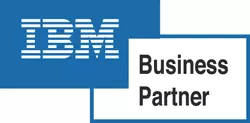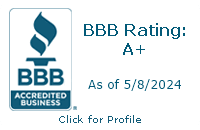Todd explains the process of finding, buying, tailoring, and integrating business software.

I wish I had a dollar for every time someone said to me, "You know, I can't believe my business is the only one needing this. There MUST be a system that already does this!"
THE reply to this statement is "Yes, there probably is – and ... " followed by one of several caveats. MY reply to this statement varies, depending on how much truth I believe my listener can stand to hear.
Caveats fall into several general categories – Finding, Buying, Tailoring, and ;Integrating.
Finding
Finding is likely the most difficult caveat to overcome because, until you've found a system, you can't buy, tailor, or integrate it. I believe the proliferation of apps on Apple iTunes, Google Play, and Amazon Appstore has caused business owners and managers to believe there is an equivalent marketplace for business applications. What these folks forget is the difference between a MASS market and a LARGE or NICHE market. To put this into perspective, as of September 2015, Wikipedia reports the iTunes App Store has over 1.4 million apps, and more than 100 billion apps have been downloaded. Contrast that with:
- Perhaps 4 million customers for Intuit's QuickBooks application.
- About 110,000 companies using Microsoft Dynamics NAV (formerly, Navision).
- Almost 50,000 customers for SAP's Enterprise Resource Planning system (formerly known as SAP R/3).
- Maybe a few hundred customers for a very specialized industry-specific ERP system.
For business systems, the system has to reach a certain number of customer installs (say, 1,000 or more), or have a large enough price tag (say, $250,000 or more), for prospects to find you. Many owners and managers believe their business processes are more general than they really are, especially when their business uses proprietary processes, or when their people don't want to change processes to fit new technology.
One other caveat – sometimes there ARE systems EXACTLY meeting your needs, because they are used by your competitors. These systems could have been custom developed or highly enhanced just for these companies. In cases like this, the companies do not WANT their custom software or system enhancements to be found – otherwise, they might lose a competitive advantage.
Buying
Once you've found a "system that already does this," you have to buy it. "Free" apps and services like Facebook have created unrealistic expectations of what business software should cost. When I hear "free," I recall an acronym used by my Economics 101 professor – TANSTAAFL (pronounced "taan - stof - el"). What's this? "There Ain't No Such Thing As A Free Lunch."
A quote from the excellent book, Data Crush, illustrates the TANSTAAFL concept and dispels the myth of truly "free." – "If you aren't paying for it, then YOU are the product!" (page 30) Facebook can be free because the company is collecting large amounts of information about you, your friends, your buying preferences, and your daily routes (via geolocation), among other things, as you use the application. With these factors, Facebook can create an incredibly detailed – and highly accurate – buying persona for you, which allows advertisers to target products and services to very specific segments.
In addition to free apps, there are a number of low-cost apps for $4.99 and $9.99 – they are great for their intended purpose ... but they can't run your business. Shrink wrap small business software products like QuickBooks and Sage 50 (formerly, Peachtree Accounting) are great values for under $1,000 – as long as they fit your needs. If they don't, then frequently the next level of business systems involves tens of thousands of dollars.
I remember meeting with a potential client about six months ago who was using Sage 50 and was looking to replace it. The key features he needed – management, converting operations, bar code printing, and scanning – are not typical for a business his size. Unfortunately, he never could – or never wanted to – understand he was likely looking at a $40,000 to $50,000 investment. As far as I know, he's still looking.
Tailoring
Once you've found, selected, and bought software for your business, you need to implement it – and this requires tailoring it to the way your company does business. Most software contains various options to configure it to your specific processes. Even if you buy software with templates available for your industry, you still have to figure out how to adapt the templates to your needs. This involves performing process reviews and, ideally, reengineering your processes. One vendor calls this "de-crapification" – a term I think is VERY fitting!
Remember – you want to streamline, error-proof, and simplify your processes FIRST, and THEN automate them. If you automate a mess, you'll just make more mistakes more quickly.
Integrating
Finally, you'll likely want or need to integrate your main business system with other systems – for example, with a very specialized legacy database, or with a time-clock system. True integration typically requires a relational database server, such as Microsoft SQL Server. Integrating applications – for example, so that an event in one system triggers another event in a second system, or so that data changes in either system automatically update the data in the other system – takes time to analyze, design, develop, and test. After all, you want the integration software to be 100% accurate, 100% of the time, regardless of the transactions or data handed off to it.
In Closing
"There MUST be a system that already does this!" Yes, there likely is. The question then becomes – how do you go about finding, buying, tailoring, and integrating that system? We've been doing projects like these for over 26 years, so please feel free to call me when you're ready to get things done.
Sincerely,

Todd L. Herman





